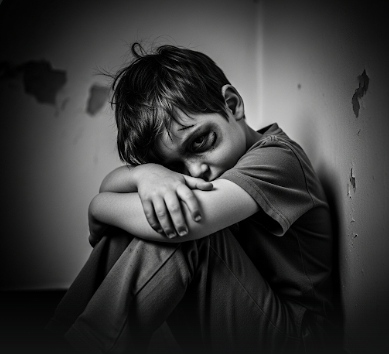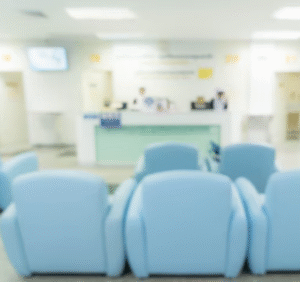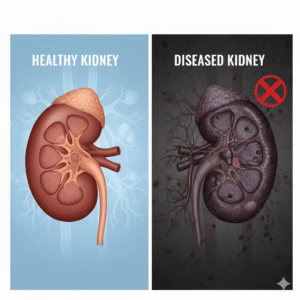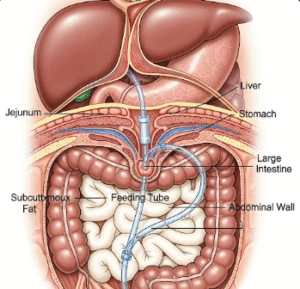Overview
Battered Child Syndrome (BCS) is a serious form of child abuse characterized by repeated physical injuries inflicted on a child by a parent, caregiver, or other responsible adult. It is not a single incident but rather a pattern of physical harm over time, often accompanied by emotional neglect or psychological trauma. BCS is recognized as a significant public health and social welfare issue worldwide, including in Korea.
While Korea has strict child protection laws and a national reporting system for abuse cases, instances of physical and emotional abuse still occur, often hidden within households. Prompt recognition, reporting, and intervention are crucial, as ongoing abuse can lead to severe injuries, disability, or even death.
What is Battered Child Syndrome?
Battered Child Syndrome is a medical and legal term used to describe the non-accidental physical injuries sustained by children due to abuse. The condition was first formally described in the 1960s when healthcare professionals began recognizing patterns of injuries inconsistent with accidental trauma.
BCS can involve:
- Bruises, fractures, or burns in unusual patterns or at different stages of healing
- Internal injuries, such as organ damage or brain trauma
- Signs of neglect, such as malnutrition or poor hygiene
Medical professionals, teachers, and social workers in Korea are trained to identify potential signs of abuse, as early detection can save a child’s life.
Symptoms
The signs of Battered Child Syndrome can vary depending on the severity and frequency of abuse. Common symptoms include:
Physical signs:
- Unexplained bruises, burns, or cuts
- Fractures in various stages of healing
- Head injuries, including skull fractures or subdural hematomas
- Bite marks or welts in the shape of objects
Behavioral signs:
- Extreme fear of parents or caregivers
- Flinching when approached suddenly
- Withdrawal from social interaction or school activities
- Aggressive or disruptive behavior
- Developmental delays
Psychological signs:
- Anxiety, depression, or post-traumatic stress
- Difficulty trusting adults
- Nightmares or bedwetting
- Self-harming behaviors in older children
Causes
The causes of Battered Child Syndrome are rooted in a combination of social, psychological, and environmental factors. Common contributing causes include:
- Parental stress from financial hardship, unemployment, or relationship problems
- Substance abuse by caregivers, including alcohol or drugs
- Mental health disorders in parents, such as depression, personality disorders, or unresolved trauma
- Cycle of abuse, where the abuser was once abused as a child
- Unrealistic expectations of child behavior and development
- Cultural or disciplinary beliefs that tolerate physical punishment beyond safe limits
Risk Factors
Certain situations increase the likelihood of Battered Child Syndrome:
- Families under chronic stress or poverty
- Caregivers with a history of violence or criminal activity
- Children with disabilities or chronic illnesses
- Stepchildren or foster children in unstable homes
- Lack of social support networks for parents
- Social isolation of the family from neighbors, relatives, or community
Complications
If left unaddressed, Battered Child Syndrome can have devastating consequences:
Physical complications:
- Permanent disability from severe injuries
- Brain damage leading to developmental delays
- Death in extreme cases
Psychological complications:
- Lifelong post-traumatic stress disorder (PTSD)
- Difficulty forming healthy relationships
- Increased risk of depression, anxiety, or substance abuse
Social complications:
- Poor academic performance
- Difficulty maintaining employment in adulthood
- Higher likelihood of perpetuating abuse in the next generation
Prevention
Preventing Battered Child Syndrome requires a multi-level approach involving families, communities, and government systems:
- Public awareness campaigns about child abuse signs and reporting methods
- Parenting education programs to promote non-violent discipline techniques
- Early intervention by healthcare providers, teachers, and social workers when warning signs appear
- Strengthening social services to provide resources for at-risk families
- Mandatory reporting laws to ensure professionals notify authorities of suspected abuse
- Community support systems such as counseling, childcare assistance, and stress management resources
In Korea, the National Child Protection Agency and regional child protection centers play a central role in prevention and intervention.
Treatment Options in Korea
1. Diagnosis
- Medical examination to document injuries and assess healing stages
- Imaging tests such as X-rays or CT scans to detect hidden fractures or internal injuries
- Psychological evaluation to assess emotional and mental well-being
- Interviewing the child in a safe, non-threatening environment
- Collaboration with police and child protection services for investigation
2. Immediate Medical Care
- Treating wounds, fractures, and burns promptly
- Hospitalization for serious injuries or when the child’s safety is at immediate risk
- Pain management and infection prevention
- Nutritional support if neglect is also present
3. Psychological Support
- Trauma-focused cognitive behavioral therapy (TF-CBT) for the child
- Counseling for non-abusive family members to provide a stable environment
- Play therapy for younger children to help process trauma
4. Legal & Protective Measures
- Removal of the child from the abusive environment by court order if necessary
- Placement in foster care or with safe relatives
- Legal prosecution of the abuser
- Ongoing monitoring by child protection officers
5. Long-Term Rehabilitation
- Continued counseling to rebuild trust and self-esteem
- Academic support for children who have missed school due to abuse
- Social skills training and peer group therapy
- Regular medical check-ups to monitor healing progress
Korea’s Integrated Child Protection System ensures that abused children receive both medical treatment and ongoing social support, aiming to provide a safe, nurturing environment where they can recover and thrive.













